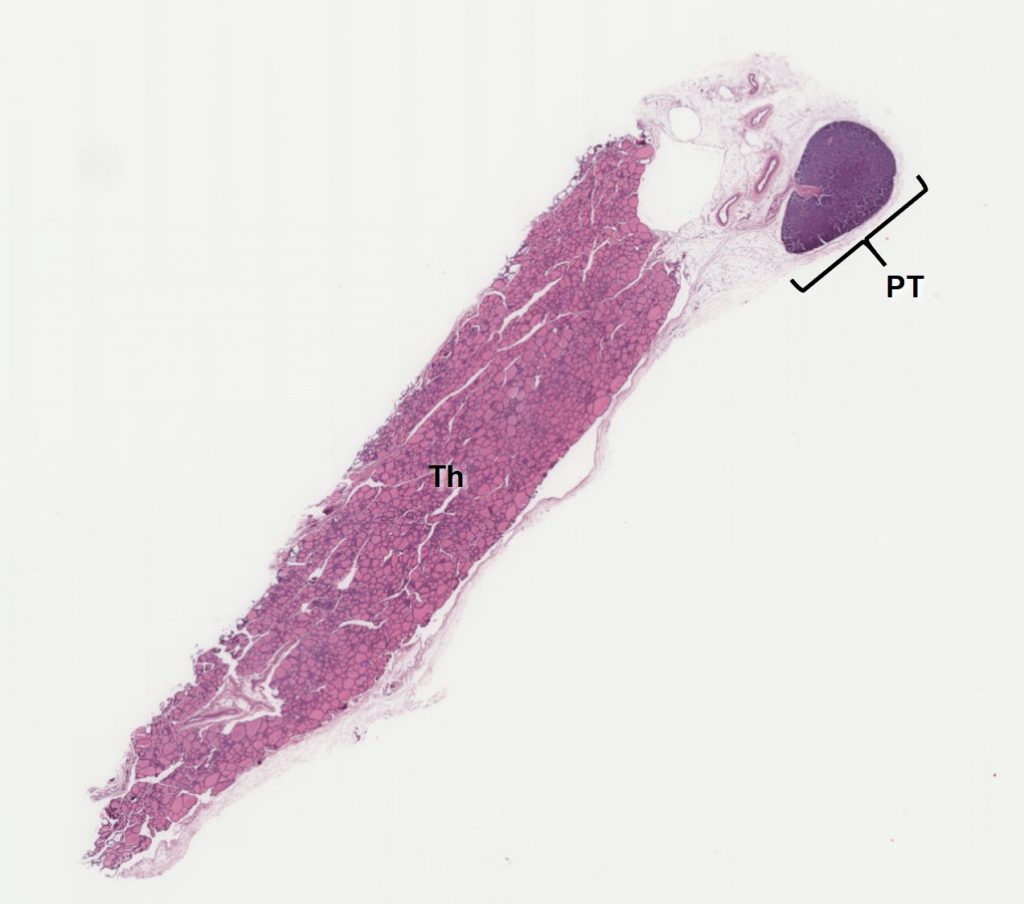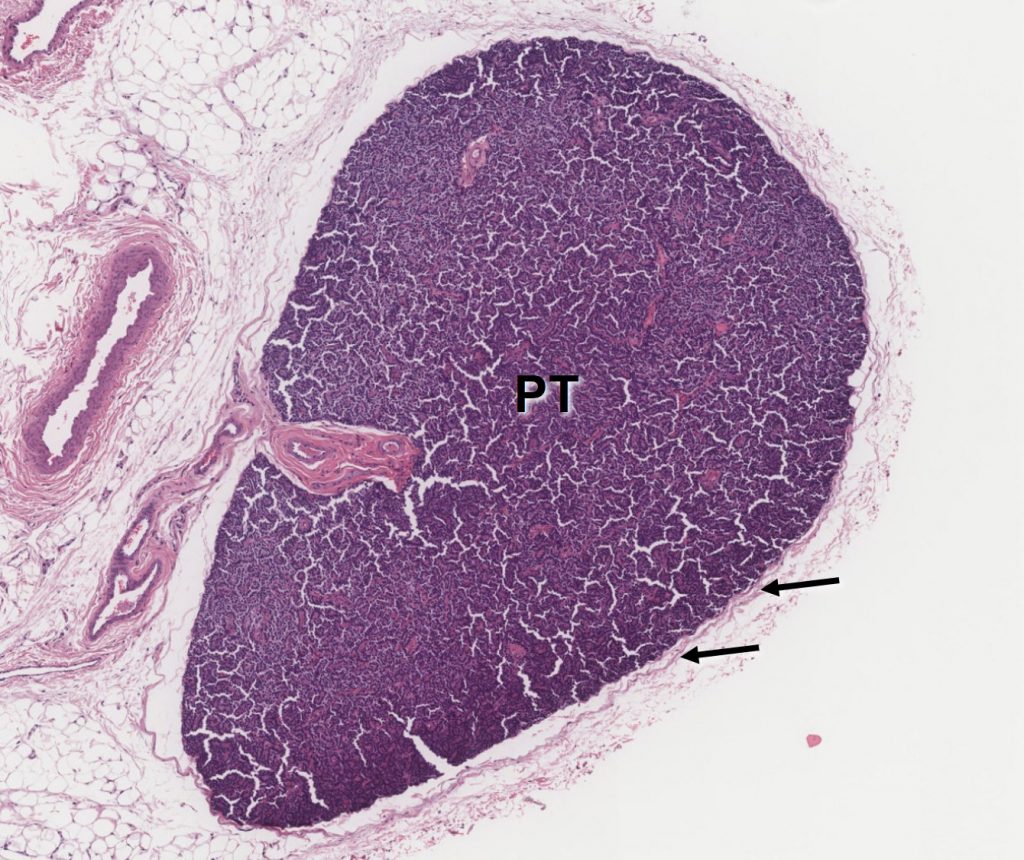Chapter 15: Endocrine system
Parathyroid glands
The parathyroid glands of mammals typically consist of two pairs of right and left glands that are intimately associated with the thyroid gland. In major role of the parathyroid gland is in regulating serum calcium and phosphorus homeostasis via the production of parathyroid hormone (PTH).

As in other endocrine organs, the parathyroid glands have an interconnected relationship with other tissues and organ systems: namely, bone, the kidneys, and the intestine.
The parathyroid glands are often directly adjacent to and/or located within the thyroid glands. The parathyroid glands are surrounded by a thin capsule, and separated into lobules via thin fibrous septa. The majority of the parathyroid gland parenchyma is composed of dense cords of chief cells. Chief cells are polygonal epithelial cells containing moderate amounts of pale eosinophilic cytoplasm and a central, round, hyperchromatic nucleus. Chief cells are responsible for the production and secretion of parathyroid hormone, which is stimulated by low blood calcium levels.


In addition to chief cells, the parathyroid glands contain small clusters of polygonal cells, oxyphil cells, with moderate to large amounts of eosinophilic, slightly granular cytoplasm. The exact function of these cells is unknown. The remaining parenchyma of the parathyroid glands is typically composed of abundant small capillaries (remember: endocrine organs secrete directly into the bloodstream, and therefore, are often highly vascular organs), and variable amounts of adipose.
